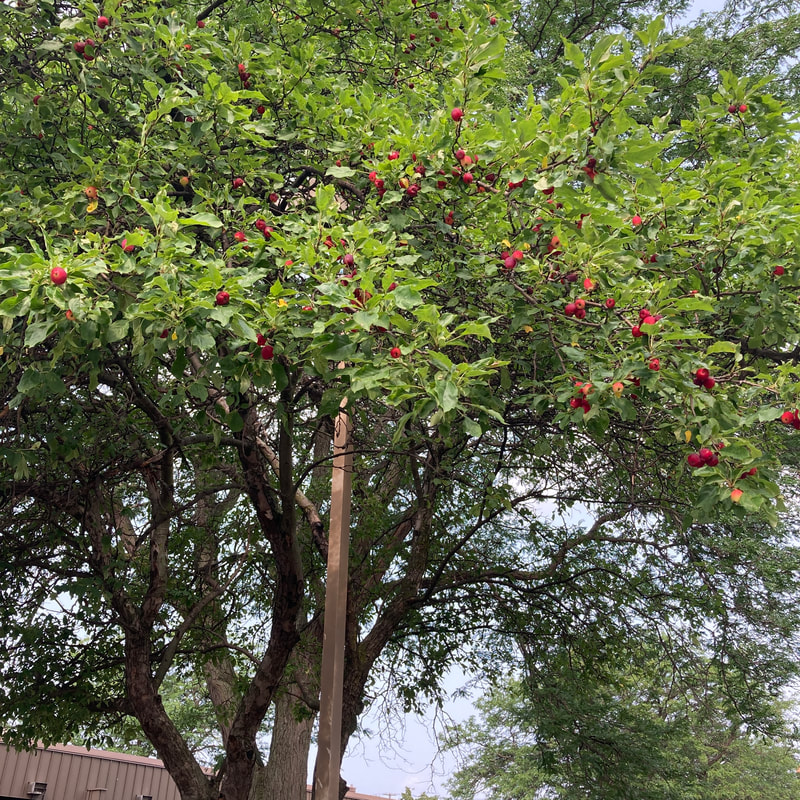|
Photo and article by Donna Iverson Recently on a stroll through my neighborhood, I came across a Crab apple tree …the small hard apples were strewn across the sidewalk. And while it was messy, the tree itself was beautiful. The Crab apple (Malus sylvestris) is the original apple tree from which modern day apples have been cultivated. This native wild apple tree is almost disappearing as the larger sweeter cultivated apple varieties have taken over. In a book titled the Ecological Gardener, author Matt Rees-Warren lists the Crab apple as his first choice if you are looking to plant a tree in your garden. He recommends the Crab apple as a way to save the wild apple and provide food for wildlife. As an added benefit, it is an indigenous native tree that will provide beauty year around. As for the mess, the wild life will likely eat the crab apples before you have to worry about it. As for the apples, admittedly they are small and bitter, less than two inches in diameter. But wildlife love them, including squirrels, rabbits, foxes, badgers, chipmunks, and raccoons. The fruit is also a favorite of blackbirds and crows. In early spring, the Crab apple will produce white/pink blossoms that will cover the tree and provide some of the first food for pollinators, birds and butterflies alike. The tree will grow in sun or shade, is not fussy about soil type and is drought resistant. Although the roots are not invasive, it should be planted at least 10 feet from your house. Prune dead and diseased branches in late winter. Final height will be 13 to 40 feet. And while humans can eat them as they are not toxic, they are better used in jams and jellies. You can also steep them in gin or vodka for three months, for an apple-flavored cocktail. Crab apples aren’t grown commercially because they are difficult to pick. It can take hours to pick a bushel. Planting a Crab apple is a way to rewild your garden. The fruit can be processed into a delicious jam or jelly. And the wood of a Crab apple can be burned in a bonfire producing an intoxicating aroma. Wildlife will benefit and the tree will provide shelter and food for many bird species. And finally you will be saving the original wild apple which is in danger of disappearing.
0 Comments
Your comment will be posted after it is approved.
Leave a Reply. |
Archives
July 2024
Categories |

 RSS Feed
RSS Feed